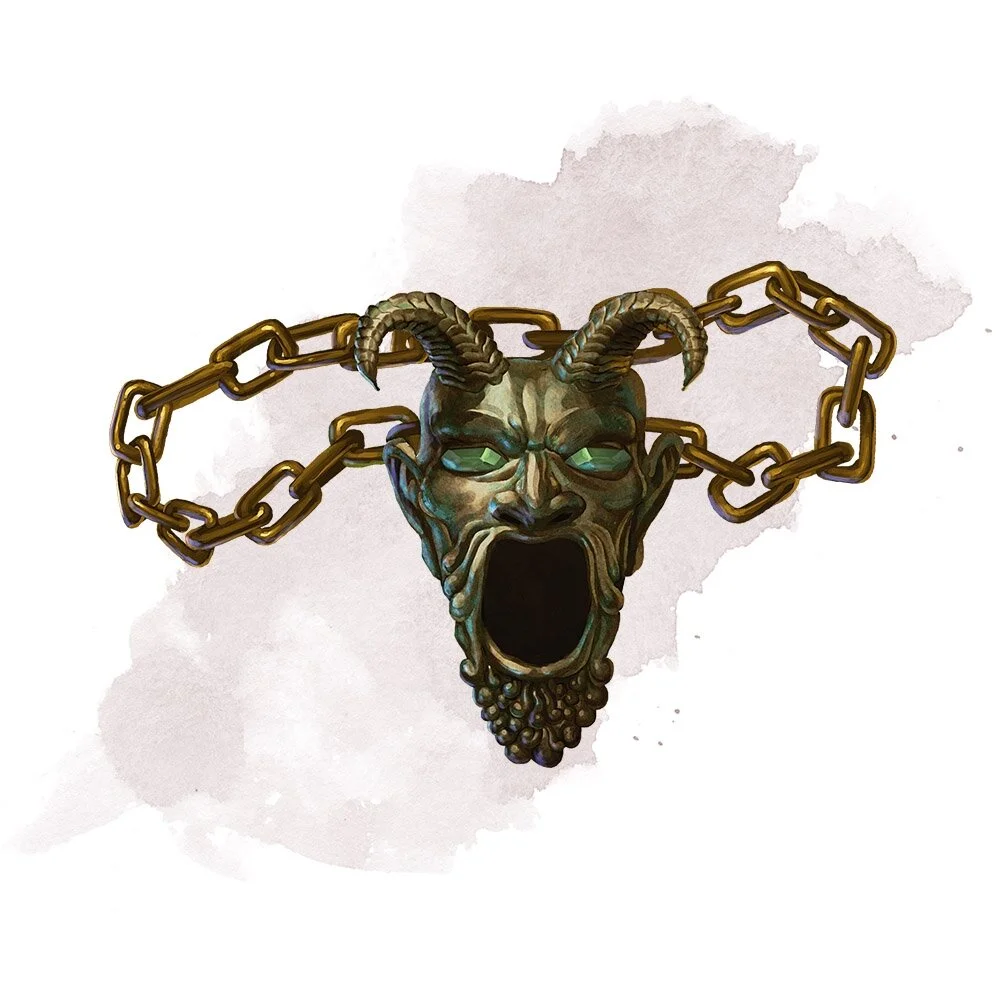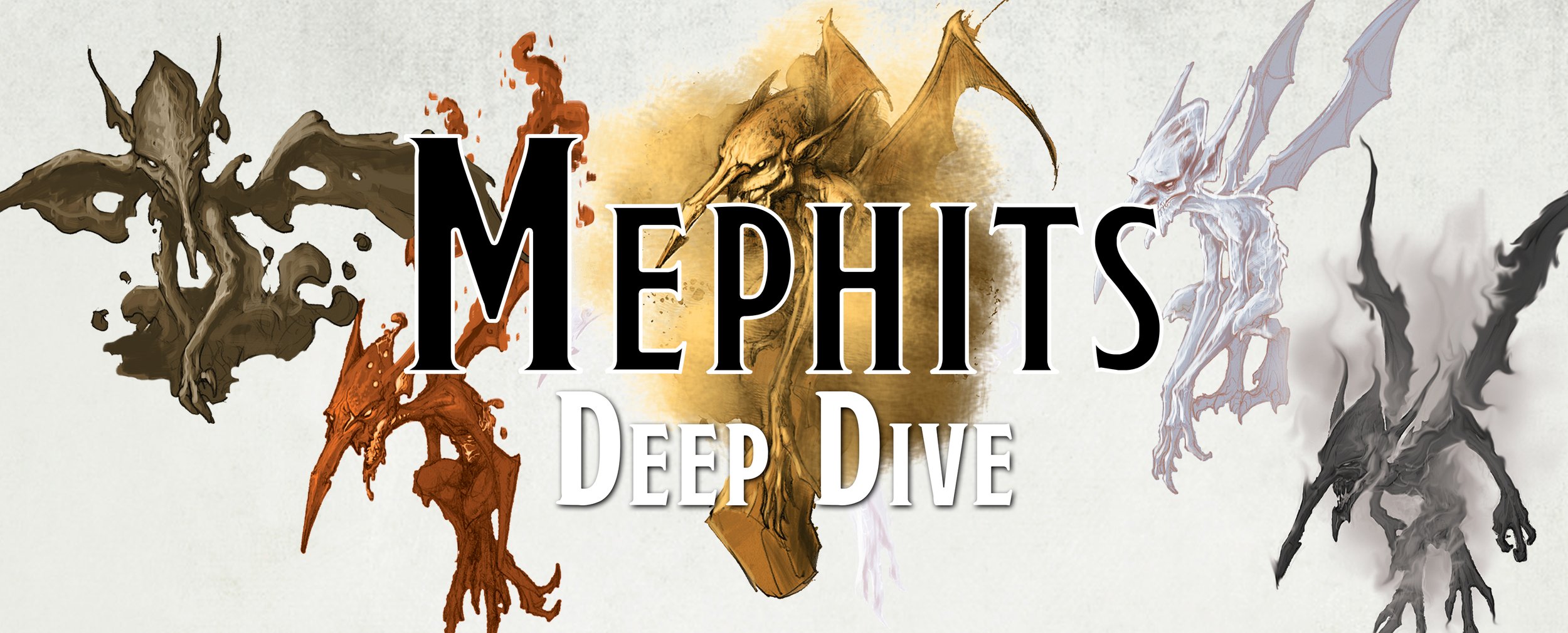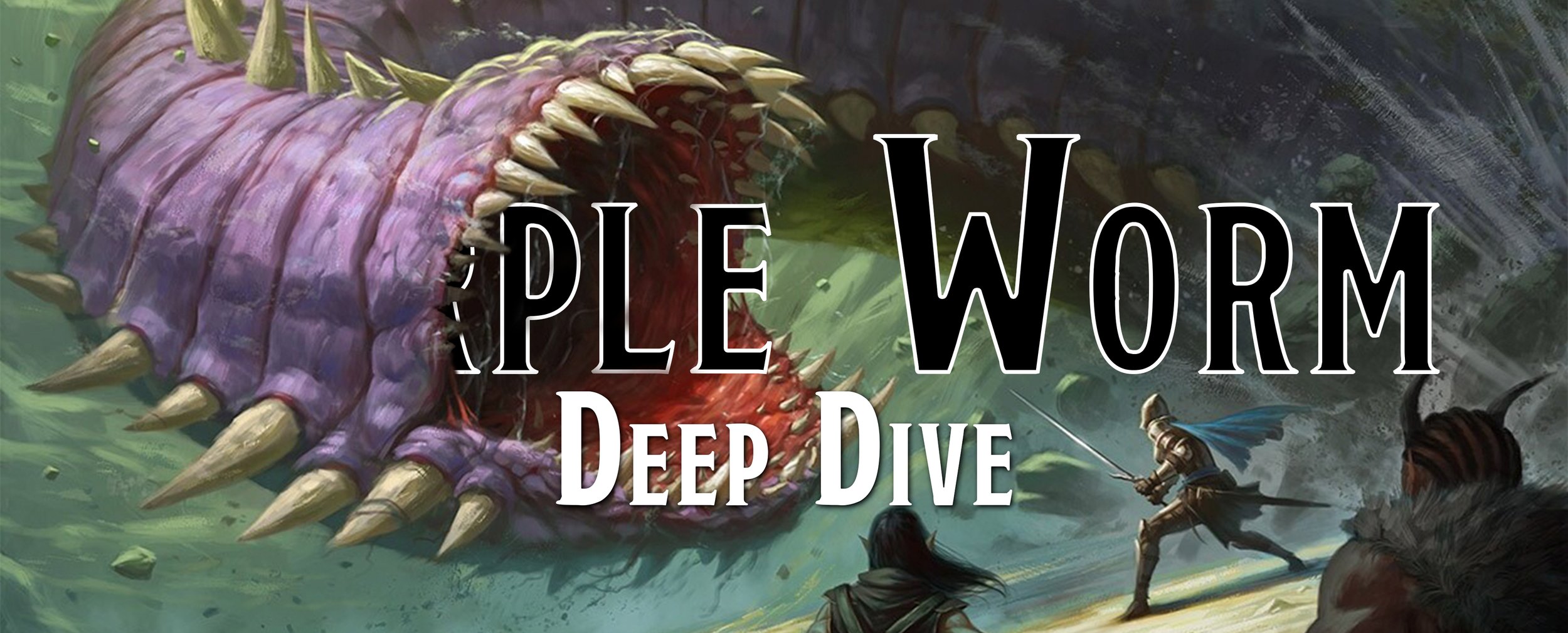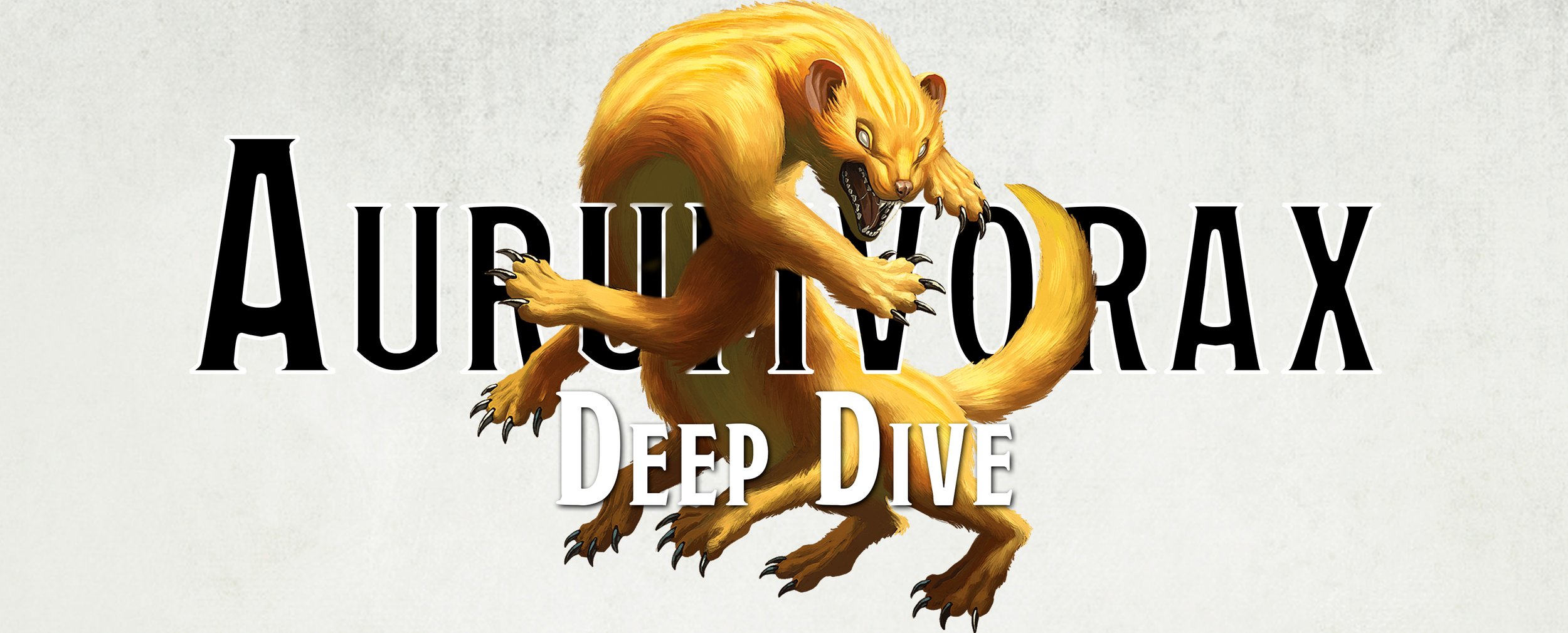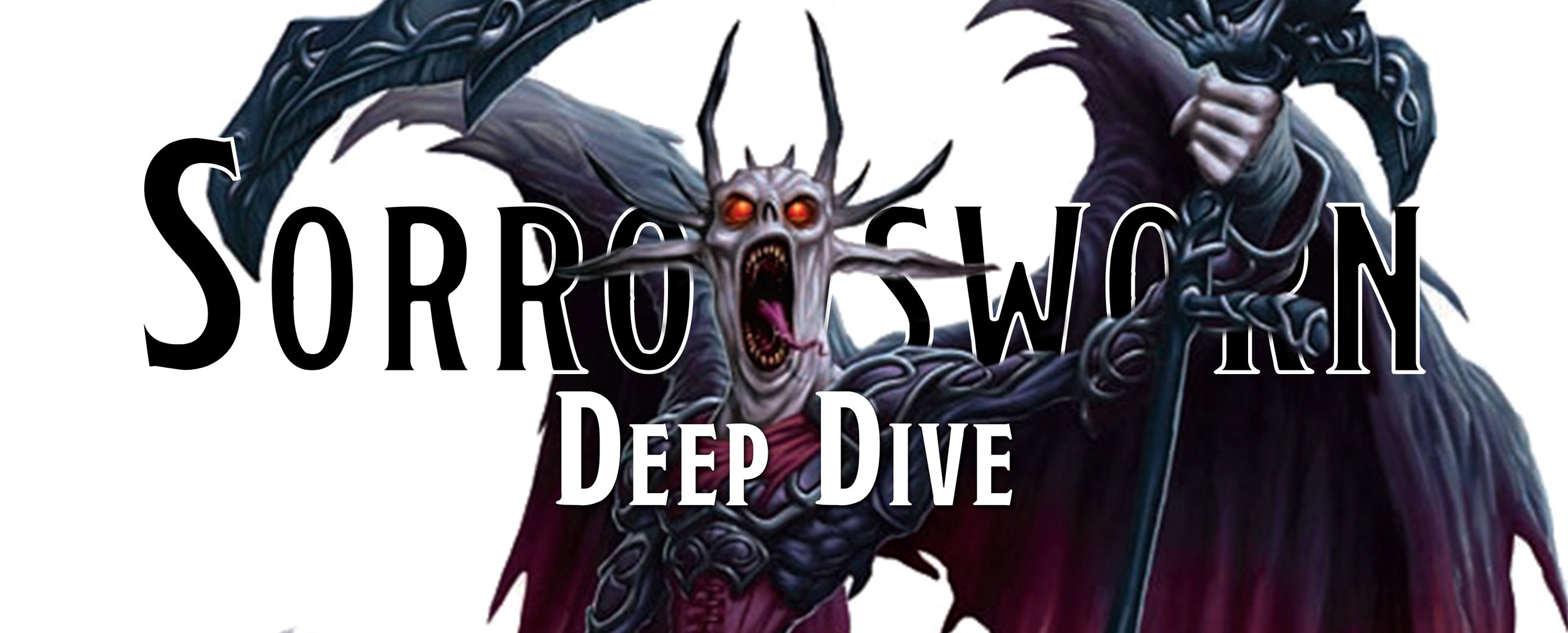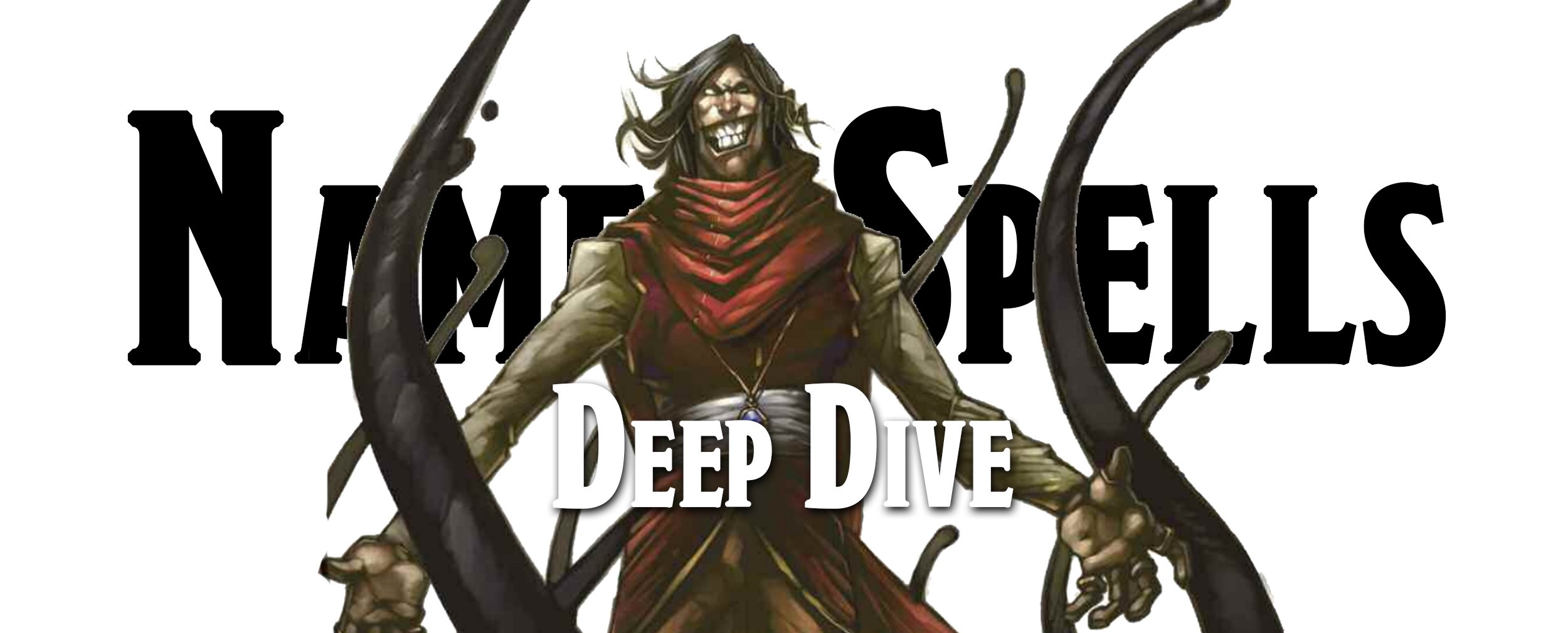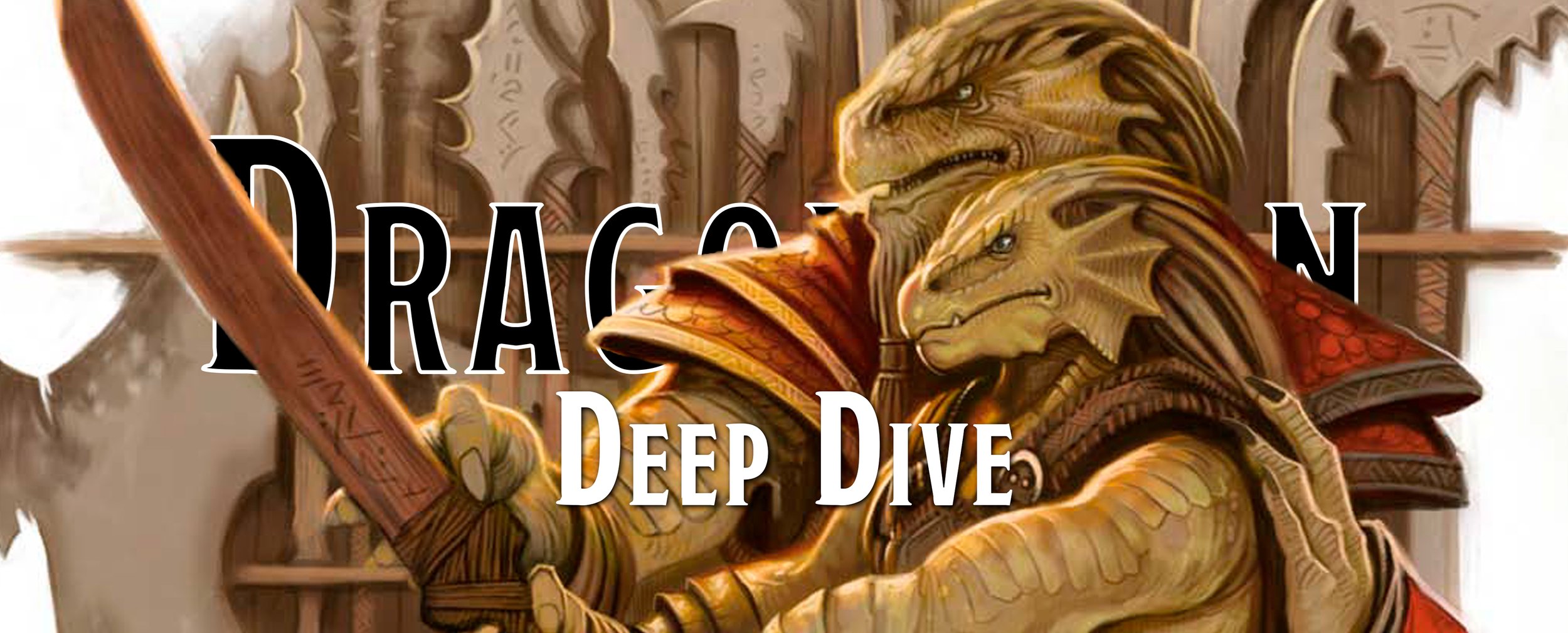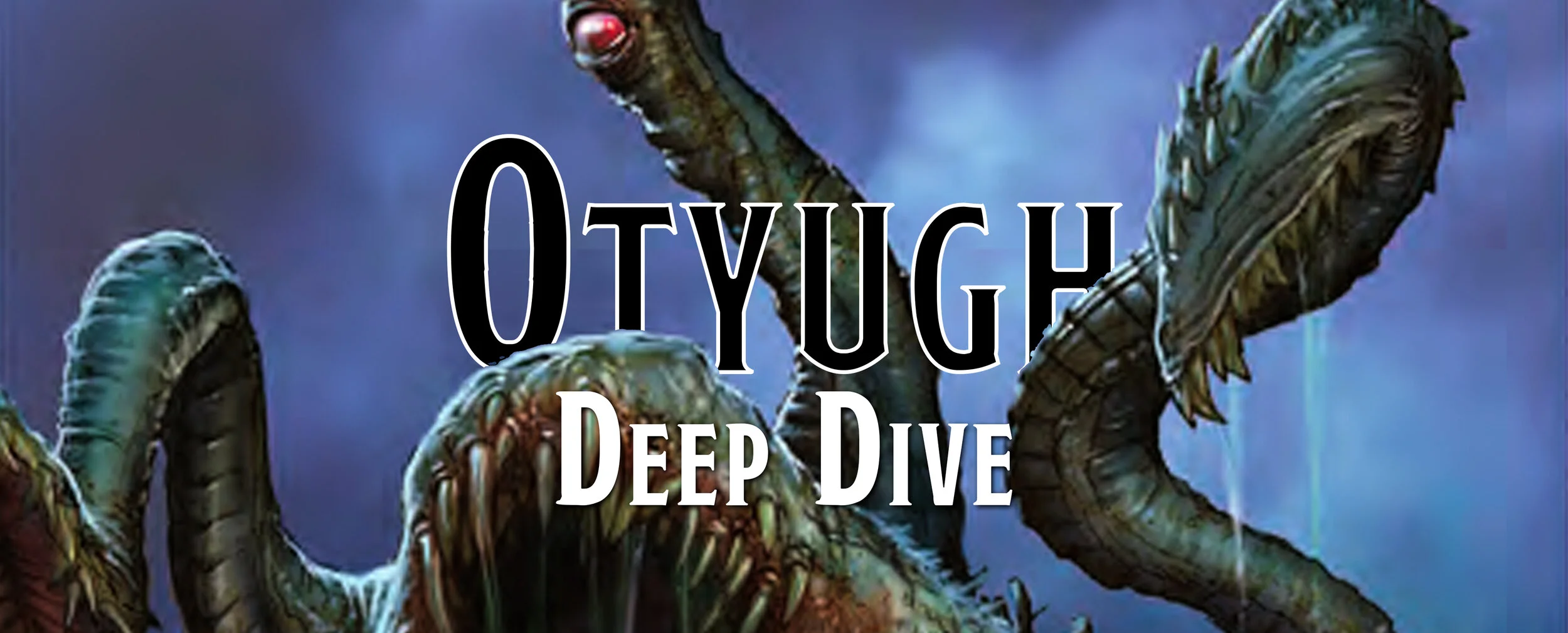Rewind - Artifacts II
Artifacts are magic items of amazing power, often created eons ago when magic was at its strongest or handed down by a god to one that serves them or any variety of reasons. These powerful items can help define a campaign or turn it completely on its heel. Some campaigns may only grant a single artifact, while others may give each player a custom-tailored artifact, turning a strong party of adventurers into ultimate heroes.
It’s been a while since we talked about Artifacts previously, but it’s time to revisit some of the oddest artifacts from Dungeons & Dragons past!
AD&D - 1e / Mighty Servant of Leuk-O
Those who are most knowledgeable regarding ancient artifacts believe that this device is of the same manufacture as the Machine of Lum. The Mighty Servant of the famous General Leuk-O is a towering automaton of crystal, unknown metals, and strange fibrous material. It is over 9' tall, 6' deep, and some 4.5' wide. Inside is a compartment suitable for holding 2 man-sized creatures, and there is space for 4-5 others to sit outside. If the possessor knows the proper command phrases, he or she can use the Mighty Servant as a transportation mode, magical attack device, or fighting machine. It is armor class -1 and can withstand 60 hit points of damage. Note all weapons do only 50% of normal damage (round down). The Mighty Servant regenerates (self-repairs) 2 points of damage per round, Its magic resistance is 100%. Acid, cold, fire, heat, vacuum, and/or water have no effect on the device. Electrical/lightning attacks cause only 20% normal damage (round down), even if the Servant fails the magic resistance check.
The Mighty Servant moves at a maximum speed of 3". After each 12 hours of operation it must rest (recharge) itself for 1 hour. Any intelligent viewer within 12" must save versus magic (+2 on the die roll) or flee in panic. It can attack but 1 time per round, and it has a base 15% chance to hit an opponent regardless of its armor class. Opponents with intelligence and a dexterity of 15 or better reduce the base chance to hit by 2.5% per 1 point of dexterity above 14. A hit from the Mighty Servant causes 10-100 hit points of damage. In addition, the Mighty Servant of Leuk-O has these powers/effects: 6 x I, 6 x II, 1 x III, 2 x IV, 2 x VI.
Effects are triggered by major power use. The Mighty Servant will obey those humans who learn its secrets of automation and control.
Dungeon Master’s Guide (1979)
Tasha’s Cauldron of Everything, 2020 WotC
If you’ve ever found mechas to be boring, Gundams as commonplace, or jaegers as blasé, then you are the perfect candidate for the mighty servant of Leuk-O. While some mechas might rely on a colorful paint job to stand out, the mighty servant is made from a combination of sparkling crystals, shiny unknown metals, and a fibrous material that probably shouldn’t exist in this world. Your sad Gundams can only hold one person at a time, while the mighty servant can comfortably hold two and more if they are willing to be meatshields and stand outside this behemoth of an artifact. The mighty servant puts all modern mechas to shame as you and your party of best friends ride this giant robot, the wind blowing through your hair as you bring peace and order to your new empire.
History
The mighty servant of Leuk-O is named after the famous general Leuk-O in the Greyhawk setting. Leuk-O is named after Gygax’s son Luke, who played in some early games and was quite a young kid. We often joke about how Gygax must have hated his players, but he obviously loved his son very much to give him a 10-foot robot machine to smash things with, especially one that could smash you for up to a hundred points of damage when all you have are a few d6 hit dice.
Leuk-O followed Lum the Mad, whose insane machine you can read about in our previous post on artifacts. The mighty servant wasn’t so much created as discovered by Leuk-O in a strange place known as the Bleching Vortex, now named the Bleching Vortex of Leuk-O. We guess the general liked naming stuff after himself. While a rare few could ever enter this black membrane that belched toxic gases from its entrance, those that did would see strange artifacts made by some advanced alien race with portals to other worlds. Leuk-O enter the vortex but a powerful Oeridian general, and he left a powerful Oeridian general with a mech capable of conquering the world.
Book of Artifacts, 1993 TSR Inc.
Once Leuk-O got his new toy, he decided to break away from Lum, his previous employer and began conquering lands for himself. The mighty servant was used as a transportation and fighting unit by Leuk-O, with the latter being able to crush his opponents with either magical or physical damage. As you can imagine, Lum wasn’t too thrilled about this, and the two did battle throughout the years. Since Lum had his machine and Leuk-O his servant, neither declared victory in any of their fights. In their final battle, both passed through a dimensional rift and promptly disappeared. Rips and tears in the fabric of time and space will usually do that.
In the context of the edition the artifact was created in, the mighty servant is truly mighty. If it’s not immune to a specific type of damage, it will have at least some resistance to it. At the same time, 60 hit points may not seem like a lot, but the mighty servant is very hard to hit with its -1 Armor Class. You may not even get a chance to hit it since anyone who sees this mechanical horror is forced to make a saving throw vs. magic. If you fail, you are running away screaming, probably about how robots will take over the world. If you can stand your ground, running away may not be a bad idea after it begins hitting you.
Artifact Properties
Every artifact is given a certain number of properties that they can have, based on how powerful the artifact is and how much the GM wants to end their campaign in a horrible firestorm of awesome magical explosions. The properties are separated into six categories:
I - Minor Benign Powers
II - Major Benign Powers
III - Minor Malevolent Effects
IV - Major Malevolent Effects
V - Prime Powers
VI - Side Effects
While there are no set rules about how a property is determined for an artifact, the DM is encouraged to at least choose the Major properties. In total, there are 40 Minor Benign, 41 Major Benign, 24 Minor Malovelent, 34 Major Malovelent, 38 Prime, and 18 Side Effects. Based on how powerful an artifact is, they could have a wide variety of each of these powers, or only have a few Minor Malevolent Effects that make the artifact rather weird and painful to use - but still incredibly powerful and dangerous. The machine of Lum the Mad itself has 15 Minor Benign Powers, which is a lot to keep track of and can include things like animating dead seven times a week, cast invisibility on yourself a few times per day, or become immune to fear or disease. In contrast, Minor Malevolent Effects include things like weight gain, loss of smell, or you take a penalty to saving throws against magical effects.
Encyclopedia Magica Volume 2, 1995 WotC
Things start to get a little weird with the Major Effects and Powers. The benign effects mostly include being able to cast powerful spells, like disintegrate, once per day though a few other abilities include increasing your speed or bonuses to your Armor Class. On the other hand, the malevolent effects are pretty awful like losing portions of your body every time you use a power of the artifact or it sucks away all the magic from an item within 20 feet of you. Then again, a twisted DM could have some fun at your expense by making you shrink every time you use the item or you have to sacrifice a creature every time you want to activate the item.
Prime Powers range from a game-balanced power of casting meteor swarm once a day to the game-breaking ability to casting wish once per day. One of the more original powers is the ability to cast a combination of spells at one time, so a wizard could come up with various fun combinations. You might even be able to summon an archdevil every day, though what they do to you is outside the power of the artifact.
The last set of properties are the Side Effects, which aren’t as bad as you may think, but they aren’t anything fun either and seem like just another way to have malevolent effects thrown at you if the DM gets to pick your powers. Some of them are double-edged swords like being unable to ever touch metal or be touched by it, so while you won’t be swinging a sword or wearing armor, at least swords can’t hurt you. Then again, you could force your DM to answer any question of yours once per day or lose 1 level of experience whenever you use the item.
As for the mighty servant, you get six Minor Benign, six Major Benign, one Minor Malovelent, two Major Malovelent, and two Side Effects. While you don’t get any Prime Powers, you at least know that your power armor is more helpful than harmful.
AD&D - 2e / Heward’s Mystical Organ
In the Fables of Burdock readers find mention of a musical instrument, an organ of large size and mystical enchantment. It was said to have been fashioned by Heward, Patron of Bards, to teach mankind the art of song and to bring wonder and joy into the world. Through its keys and music, the Patron was able to spread the gifts of harmony, composing, grace, and beauty. Through his songs, Heward watched over and protected the lands, guiding the weather to glorious sunsets, rain to fall on parched soil, bread to rise firm and fresh, children to be happy, and indeed protecting all that mankind now loves.
Unfortunately, the Fables say, mice among the frets gnawed at the workings, causing sour notes to escape, giving voice to the harpies, sirens, and other evil creatures that entice and trap by song. Enraged, the Patron cursed the mice to remain forever lowly and meek of voice. Believing the Organ ruined, the Patron abandoned it (and took up the harp). The location of the Mystical Organ is unknown, but the legends of several great and powerful bards relate its discovery and subsequent loss. Oldenburg the Blind supposedly discovered it and from its keys learned the 9 Enchanting Lays whereby he won the heart of Princess Leir, daughter of the evil Fairie-Lord Marrad. Mad Ossam was supposedly stricken upon trying to compose a tune at the Organ. Cursed with the power of blight and despair, he brought baronies to their knees in his travels. Many a bard has claimed to have studied at the Organ, but these are certainly nothing more than the exaggerations of showmen.
The Organ is a massive, immovable object. The pipes easily extended the height of a cathedral chapel. The keyboard has three different sets, and there are 27 ivory stops. Nine great pedals control the bass notes. Each pipe is sounded by a bound elemental of appropriate size. The stops, when arranged in different settings, alter the pitch and voice of each pipe, while the keys strike the notes. Age, disuse (for even an artifact of such delicacy must be tended), and the ravages of the spiteful mice have rendered many of the pipes, keys, and stops inoperable. To use the Organ one must play a tune upon it. However, this is a tremendously dangerous business since there are so many possible combinations of settings and notes. Prior research and faith in the gods must serve as a guide. (As an option, players can compose or at least hum a little ditty of their own when their characters attempt to use the organ.)
When a tune is played, the magic takes effect. Just what magical result occurs is left to the DM. He should base this upon the quality of the playing, the tastefulness and mastery of the music, and the desires of the player. Theoretically, Heward's Mystical Organ can have as many powers as there are settings and tunes to be played. With such a broad range, the DM can create virtually any result. The press of a key may cause flowers or straw to rain over a small village 100 miles away, while a fugue may result in the sinking of several islands off the coast or the reshaping of the organist into a newt (especially if he hits a bad note). Unlike other artifacts (which possess powers the character must discover), users of the Organ should decide upon the effect they wish to create and then research the notes and stops needed to create it. The DM can, of course, alter the end result (mortals playing with the toys of gods seldom get what they really want) and a check should be made to see if any errors (a missed note or beat) occur in the playing. If an error is made, the DM can have drawbacks and unfortunate results prepared. Some of these can include: permanently polymorphing the player into a small lizard or insect, permanent deafness or madness, or immediate alignment change. The character could be endowed with a voice equal to a horn of blasting (so he can't speak without causing harm), or he might be forever compelled to speak in rhyme or in song. One or more levels might be drained by the Organ. All magical items within 100 feet could be permanently negated. The organist could be teleported to another planet, etc. In addition, the tones of the Organ, no matter how badly set or played, are of unearthly beauty.
Whenever it is played, all hearing it (including the organist) must roll a successful saving throw vs. spell or be enchanted forever. Those so stricken cannot abide any other sound. Deprived of its tones, they despair and see no wonder or greatness (in either good or evil) in the world. Gradually, those enchanted take less and less interest in life until they finally reach the point where even the finest food is an anathema to them. These slowly wasting creatures are truly piteous sights. The location of the Organ is constantly changing. All the legends agree that it exists nowhere in the world, but in some misty other realm. Noteworthy too is the fact that those who leave its hall are never able to find it again.
Dungeon Master’s Guide (1989)
Book of Artifacts, 1995 TSR Inc.
Heward is known for a lot of things, with the most famous being his handy haversack, unfortunately, his most powerful and dangerous creation is largely unknown. His other creations include Heward’s bell, which allows the user to summon elementals; Heward’s fortifying bedroll, you can take a long rest over a single hour-long nap; Heward’s handy spice pouch, a magic pouch to provide food seasonings; Heward’s hireling armor, Heward’s lyre of truth, and many more.
History
Heward’s lore depends on the campaign setting you play. In the Greyhawk setting, Heward appears as a mere mortal but, in fact, is the God of Bards and Musicians. He traveled with the Company of Seven and even helped imprison Luz. If you play in the Forgotten Realms setting, Heward was human before he became a God. There is some debate of him being more than just a man, but not quite a demi-god, so for the sake of argument, we’ll go with human. His musical prowess comes from being the first of humans to learn the art of song from elves, and he then created the mystical organ.
In The Book of Artifacts (1993), we are told that he could cure blighted lands, command the weather, and even have a bit of control over the sun with the mystical organ. People even claimed the sounds the instrument made were stolen from nightingales and that races of all types were unable to resist is melodic notes. Many of those drawn to its sound then learn the art of music from him, becoming the first bards. As we all know, Gods are spiteful, petty beings, so it was those divine jerks that sent mice to destroy the mystical organ by destroying keys, pipes, and more.
Artifact Properties
The Dungeon Master’s Guide leaves all of Heward’s mystical organ effects up to the DM, with some suggestions that playing the wrong key will drive the character insane or if the player can come up with a good jingle, they might be able to cast something as powerful as the wish spell. In The Book of Artifacts, however, there are 23 songs a character can learn to play. If you become a decent piano player, you can trigger up to six powers or abilities from one of the five tables provided in the book. The tables include personal enhancements, abjurations abilities, enchantment and charm abilities, cataclysm abilities; which are just evocation spells that affect 1 square mile of area, and conjuration powers to summon forth things you really shouldn’t.
Book of Artifacts, 1995 TSR Inc.
If you are awful at playing the piano, or even just mediocre, there is a chance you can become cursed. Like most curses, the mystical organ curse isn’t exactly something you would want as it nullifies your future career ambitions of being an adventurer… and probably your party as well. Everyone that can hear the screeching horrid notes you produce on the artifact must immediately make a saving throw, with a hefty penalty, or go mad. We don’t mean that the party will be upset with you, well the players might be, but rather that the characters are tortured by all sounds, all your abilities are stripped away, and the DM gets full control over each character. Then again, it doesn’t get much better if you can play the mystical organ well as it can cause melancholy in others who hear it because they know they’ll never hear anything as beautiful again.
The properties of the music you can play are determined by the DM and 23 different songs can be played on the mystical organ. There are several tables in the back of The Book of Artifacts that the DM can lean on, though they don’t get all of them. Instead, the DM gets five abilities from Personal Enhancement, six from Abjurations, six from Enchantment/Charm, three from Cataclysms, and three from Conjuration. Of course, there is no Heward’s music sheet for you to learn these songs off of, instead you kind of just have to guess at the keys and hope for the best. If you happen to fail well, you know… madness.
There are 18 other tables in the back of the book, so if the DM is wanting to screw with the player’s expectations a bit, they could borrow some of those other effects or create their own. These different effects include casting spells freely, increasing your ability scores, sending cataclysmic events to destroy armies around the world, or even be able to remove any ill effects from being drunk.
3.5e / Sphere of Annihilation
A sphere of annihilation is a globe of absolute blackness, a ball of nothingness 2 feet in diameter. The object is actually a hole in the continuity of the multiverse. Any matter that comes in contact with a sphere is instantly sucked into the void, gone, and utterly destroyed. Only the direct intervention of a deity can restore an annihilated character.
A sphere of annihilation is static, resting in some spot as if it were a normal hole. It can be caused to move, however, by mental effort (think of this as a mundane form of telekinesis, too weak to move actual objects but a force to which the sphere, being weightless, is sensitive). A character’s ability to gain control of a sphere of annihilation (or to keep controlling one) is based on the result of a control check against DC 30 (a move action). A control check is 1d20 + character level + character Int modifier. If the check succeeds, the character can move the sphere (perhaps to bring it into contact with an enemy) as a free action.
Control of a sphere can be established from as far away as 40 feet (the character need not approach too closely). Once control is established, it must be maintained by continuing to make control checks (all DC 30) each round. For as long as a character maintains control (does not fail a check) in subsequent rounds, he can control the sphere from a distance of 40 feet + 10 feet per character level. The sphere’s speed in a round is 10 feet +5 feet for every 5 points by which the character’s control check result in that round exceeded 30.
If a control check fails, the sphere slides 10 feet in the direction of the character attempting to move it.
If two or more creatures vie for control of a sphere of annihilation, the rolls are opposed. If none are successful, the sphere slips toward the one who rolled lowest.
Should a gate spell be cast upon a sphere of annihilation, there is a 50% chance (01–50 on d%) that the spell destroys it, a 35% chance (51–85) that the spell does nothing, and a 15% chance (86–100) that a gap is torn in the spatial fabric, catapulting everything within a 180-foot radius into another plane (see page 151 for a way to determine this randomly). If a rod of cancellation touches a sphere of annihilation, they negate each other in a tremendous explosion. Everything within a 60-foot radius takes 2d6×10 points of damage. Dispel magic and Mordenkainen’s disjunction have no effect on a sphere.
Dungeon Master’s Guide (2003)
Book of Artifacts, 1995 TSR Inc.
Probably most well known as a black hole, the sphere’s name pretty much describes this minor artifact. It appears about 2 feet in diameter and is a sphere of pitch blackness that annihilates anything that comes into contact with it. Due to how weightless a sphere is, since it is the essence of nothing, it can be controlled by psychic waves to propel it forward, similar to how wind can propel a ship. While some might be disappointed that they aren’t the only ones to have a sphere of annihilation, since they are only minor artifacts and thus there can be multiples out there, we are sure you can make yourself feel better by annihilating a few peasants with it.
History
While there isn’t much backstory about the sphere of annihilation, it has appeared in every edition of Dungeons & Dragons as this ominous sphere of death. Its first appearance is in Supplement I: Greyhawk (1976), but it is probably best known as an instadeath trap in Tomb of Horrors (1978) where it is made to look like a statue’s mouth that is under the effects of a darkness spell… but really it's a sphere that just kills anyone that pokes their head in.
Tomb of Horrors, 1977 TSR Inc.
Artifact Properties
It is of great disappointment that the 3rd edition doesn’t have 15 tables, 40 items long that you have to roll on to figure out a dozen or so minor and major powers. The description for each artifact lists exactly what it does with no weird, random shenanigans like you get acne every time you use the artifact like in previous editions.
The properties for the sphere of annihilation is that any matter it comes into contact with is immediately sucked into the void, gone, and utterly destroyed. Another word for what happens to you is you are annihilated. No damage, no saving throw to avoid being not alive, nothing. But before you can level this superweapon at your enemies, let’s talk about the true danger of this sphere. It’s difficult to control the sphere and requires you to make a DC 30 check every time you want to try and control it. Your bonus on this check is just equal to your level plus your Intelligence modifier which means you should have a few levels under your belt before you start trying to mess with annihilation.
This sphere moves quite slowly with a base speed of 10 feet and a small boost if you roll really well on your check. You aren’t going to want to take it hunting with you, but you can use it as parts of a trap or simply to give your enemies another thing to focus on while you slowly inch complete and total annihilation closer to them. Of course, if you do mess up on the check, it can get awful for you as it immediately moves 10 feet closer to you. We recommend always giving the sphere a wide berth and stick at least 15 feet away from it at all times or join the creatures you’ve annihilated.
Tomb of Annihilation, 2017 WotC
If you happen to possess a talisman of the sphere, you are doing way better than before as you get to double your bonus when you make your check, which means you double your Intelligence modifier and your character level. Not only does this make the sphere so much easier to control, but it also means that you can really get the sphere moving quickly even if you are only level 10 with a +5 modifier. A +30 to your check means you’ll always move the sphere with a chance to move it 20 or 30 feet every round instead of just the measly 10. Though, we should warn you, if you can’t cast arcane spells, don’t pick up the talisman as it will deal a lot of damage from you just touching it.
If you are wondering what the limits are for a sphere of annihilation might be, well there are a few things to be mindful of. Everyone knows that you shouldn’t put a bag of holding inside another extradimensional space, like a portable hole, and there is a similar effect if you touch a sphere of annihilation with a rod of cancellation. The explosion can deal up to 120 points of damage to everyone within 60 feet of it, and that is the only way to destroy the sphere. Even powerful magic like dispel magic or anti-magic field do not affect this sphere as it slowly drifts closer and closer to you.
4e / Von Zarovich Family Sword
Von Zarovich Family Sword
Paragon Level Item
Enhancement: Attack and damage rolls.
Critical: +3d6 damage.
Property: Once per day, if the sword has been used to help defeat a living enemy, it must feed. The owner is stunned until the start of their next turn.
Property: You gain vulnerable 10 radiant.
Property: You do not cast a reflection.
Power (Encounter. Arcane, Weapon): Move Action. You can use spider climb (warlock 6).
Power (Daily. Weapon): Immediate Reaction when you hit with the sword. The target is weakened (save ends), and you gain 20 temporary hit points.
Special: At the end of each round in which an attack is knowingly made with it against a member of the von Zarovich family, the weapon burns with a sudden intensity, dealing 30 fire damage to its owner.
Open Grave: Secrets of the Undead (2009)
In this edition, we spread out from the Dungeon Master’s Guide and head for the supplement Open Grave: Secrets of the Undead (2009). The von Zarovich family sword is a sentient weapon, unwilling to work for those who would degrade the von Zarovich name and is focused on one thing: the glory of the von Zarovich line.
History
Curse of Strahd, 2016 WotC
While the von Zarovich family sword is a new arrival, the name shouldn’t be a surprise to anyone. Strahd von Zarovich has long held sway over the tables of many Dungeons & Dragons tables and is probably responsible for more than his fair share of character deaths and total party kills. Strahd von Zarovich is the vampire lord and ruler of Barovia, a small countryside caught in the demiplanes of dread to act as a prison for Strahd by the dark powers. They seek to torment and torture Strahd for his very soul is as evil as evil gets, and they do enjoy punishing especially cruel mortals.
Strahd had this weapon crafted by the finest crafter who was known as the Alchemist. The count was impatient though, as he felt like the Alchemist was taking too long, and so gave him the curse of vampirism to provide greater strength, endurance, and insight until his sword was finally completed. Upon seeing the glory of this weapon, Strahd slew the Alchemist with this very sword so that the Alchemist would be unable to ever craft an equal to this weapon.
What happens next, and how this weapon somehow escaped Barovia, is anyone’s guess but it was been traveling the planes seeking out those that could be a champion for the von Zarovich line and bring great honor to its family. This sentient weapon offers praise to those it deems worthy and nothing but shrill insults to those who refuse to feed the weapon or shame the von Zarovich name.
Artifact Properties
The powers of this artifact are based solely on the stomach of this sentient weapon. The sword demands being fed once per day, that it is used to slay someone and if you refuse to use the sword, thus refusing to feed it, it starts getting more and more upset with you, loudly wondering what exactly your blood lineage is and whether you are even a warrior. If you do make it happy though, it unlocks quite a few handy abilities.
It’s worthwhile to do a quick review on the concept of artifact Concordance in 4e. When you gain possession of an artifact, it informs you of its goals. The sword has three primary goals:
Slay the living, especially clerics, and rule the night
Be wielded by a powerful and noble warrior
Advance the von Zarovich name and influence
Technically, one of those things is two things, but we’ll forgive the sword. It’s pretty powerful. If you can accomplish these feats, you start accruing Concordance. Concordance is how closely you and your new shiny artifact are working together, the higher that number goes, the more you are syncing up with your artifact and the better time everyone is having. When you first get an artifact, you start at 5 and slowly, point by point, work your way up to 21 or more Concordance.
There are different tiers of Concordance, and each time you increase to a new tier you get a new power along with the base powers of the artifact. At 5, the sword has its most basic abilities and is watching to see how you do with its list of goals. Once you hit 12, you can become insubstantial which makes you harder to damage, though with the drawback that you become a bit weaker. Upon reaching 16, the sword basically is an extension of yourself and your duty to the von Zarovich line. While you lose the ability to take a long rest during the night, as that is when you should be most active, you get the rest whenever you sleep throughout the day and avoid sunlight. In addition, when you reduce a creature to 0 hit points, you can steal any lingering life force from them and regain hit points back for free!
To increase your Concordance with the weapon, all you have to do is slay high-ranking clerics and angels, keep the weapon fed, don’t drink with the common rabble in a tavern, only wear fine clothes, refuse to associate with peasants, and always defend the von Zarovich family and their honor. If you fail to do this, the artifact will increasingly see you as a disappointment, until it gets sick of how much of a failure you are to the von Zarovich family name and then turns into a mist and floats away. It will then seek out a new warrior to be a proper von Zarovich champion. If that isn’t enough, the sword will demand that its new wielder hunts you down and kills you for sullying the von Zarovich name.
5e / Crook of Rao
Wondrous Item, artifact (requires attunement)
Random Properties. The artifact has the following random properties, which you can determine by rolling on the tables in the “Artifacts” section of the Dungeon Master’s Guide:
2 minor beneficial properties,
1 major beneficial property,
1 minor detrimental property.
Spells. The crook has 6 charges. While holding it, you can use an action to expend 1 or more of its charges to cast one of the following spells (save DC 18) from it: aura of life (2 charges), aura of purity (2 charges), banishment (1 charge), beacon of hope (1 charge), mass cure wounds (3 charges). The crook regains 1d6 expended charges daily at dawn.
Absolute Banishment. While you are attuned to the crook and holding it, you can spend 10 minutes to banish all but the mightiest fiends within 1 mile of you. Any fiend with a challenge rating of 19 or higher is unaffected. Each banished fiend is sent back to its home plane and can’t return to the plane the Crook of Rao banished it from for 100 years.
Failing Matrix. Whenever the Crook of Rao’s Absolute Banishment property is used, or when its last charge is expended, roll on the Extraplanar Reversal table. Any creatures conjured as a result of this effect appear in random unoccupied spaces within 60 feet of you and are not under your control.
Iggwilv’s Curse. When the Crook was last used against Iggwilv, the Witch Queen lashed out at the artifact, infecting its magical matrix. Over the years, this curse has spread within the crook, threatening to violently pervert its ancient magic. If this occurs, the Crook of Rao, as it is currently known, is destroyed, its magical matrix inverting and exploding into a 50-foot-diameter portal. This portal functions as a permanent gate spell cast by Iggwilv. The gate then, once per round on initiative count 20, audibly speaks a fiend’s name in Iggwilv’s voice, doing so until the gate calls on every fiend ever banished by the Crook of Rao. If the fiend still exists, it is drawn through the gate. This process takes eighteen years to complete, at the end of which the gate becomes a permanent portal to Pazunia, the first layer of the Abyss.
Destroying or Repairing the Crook. The Crook of Rao can either be destroyed or repaired by journeying to Mount Celestia and obtaining a tear from the eternally serene god Rao. One way to make the emotionless god cry would be to reunite Rao with the spirit of his first worshiper who sought revelations beyond the multiverse long ago. The Crook dissolves if immersed in the god’s tear for a year and a day. If washed in the tear daily for 30 days, the Crook loses its Failing Matrix property.
Tasha’s Cauldron of Everything (2020)
Tasha’s Cauldron of Everything, 2020 WotC
Like the mystical organ, this artifact is something you are going to want to structure a campaign around as it does one thing and does that one thing well… for the most part. This crook is a powerful anti-fiend weapon loaded up with some spells and powerful magic to either ruin the entire homebrew world you’ve created for your players or allow them to wipe out an army of fiends.
History
This item first appears in 1st edition, making an appearance in Isle of the Ape (1978) as a needed item to destroy some demons, and then shows up again in 3rd edition in Dragon #294 (April 2002). It is shaped like a shepherd’s stick with a curved hook on one end, though it is loaded with jewels so it’s not like it is a common shepherd’s stick. It was created by Rao, a serene deity in the Greyhawk setting, who wanted a way to protect his flock from the horrible creatures of the lower planes.
Unfortunately, it seems that this artifact was forgotten until it was rediscovered and brought to bear against Queen Iggwilv, or as you might know her as the wizard Tasha. Upon defeating Iggwilv, she cursed it and damaged the holy relic so that in the event of its power being used again, her curse might take hold and transform the rod from a shield against demons to a summoner of every demon it has ever banished, capable of summoning over 90 million demons to your world over the course of 18 years.
Artifact Properties
Dragon #294, April 2002 WotC
Random artifact properties are back in this edition with Minor Beneficial Properties, Major Beneficial Properties, Minor Detrimental Properties, and Major Detrimental properties. For minor properties, the good ones include casting low leveled spells, getting a boost to your Armor Class, or becoming immune to disease. As for the negative properties, they include having disadvantage on magical saving throws, your allies can’t take short or long rests near you, or you have disadvantage on all Strength and Constitution saving throws. We aren’t sure that the minor properties balance each other out, but at least you typically get more good properties than bad ones.
As for the crook, you get two Minor Beneficial, one Major Beneficial, and one Minor Detrimental Property, so that’s a pretty good deal since a major good property could include a boost to an ability score, regeneration, or casting high-level magic! While the crook doesn’t have it, Major Detrimental Properties could include things like your body literally rotting, potions become useless around you, or you might even become vulnerable to all damage so, if we were stuck with this stick, we are glad we wouldn’t have to deal with any of that.
As for the rest of the artifact’s abilities, you can cast a variety of healing and protective magic, banish demons and fiends, and that’s pretty much everything. As far as artifacts go, it’s a fairly tame item… so long as you ignore Iggwilv’s curse as that can really go out and change the face of your homebrew world as millions of demons march across it. If that situation arises, we would first like to say we had nothing to do with it and it’s all the fault of the kobolds.
If you enjoy our Deep Dive series, consider
supporting us on Patreon and following us on Twitter!









